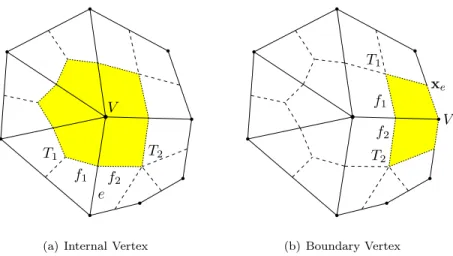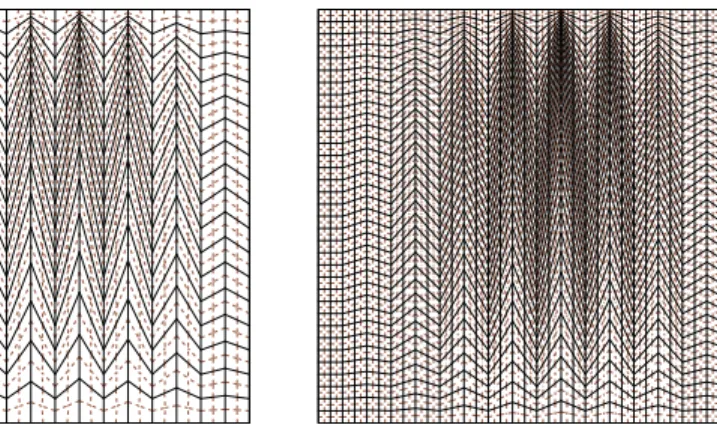The Discrete Duality Finite Volume Method for Convection Diffusion Problems
Texte intégral
Figure


Documents relatifs
tion in Figures 3 and 6b; seismic units, unconformities, CDP and VE as in Figure 7; Lc, Mc1, Mc2, Uc are lower, middle, and upper fill series beneath terraces tH and tF; Ls* and Us*
For this reason, the stability and well-posedness (Theorem 10 and Corollary 11) of the discrete problem are direct consequences of the exactness of the DDR sequence, together
Therefore, in order to obtain the corresponding error estimates, we combine the error analysis of the DDFV scheme given in [DO 05] for smooth solutions of the Laplacian problem,
The aim of this test case is to demonstrate the ability of the proposed method- ology to deal with complex geometries and unstructured meshes. In this case, Grid B is an
On such meshes, discrete scalar fields are defined by their values both at the cell centers and vertices, while discrete gradients are associated with the edges of the mesh, like in
We derive an a posteriori error estimation for the discrete duality finite volume (DDFV) discretization of the stationary Stokes equations on very general twodimensional meshes, when
We discretise the diffu- sion terms in (1) using the implicit Euler scheme in time and the so-called Discrete Duality Finite Volume (DDFV) schemes in space.. The DDFV schemes were
In Section 6, we study the stability properties of the approximate solution with respect to the data f and g and finally in Section 7, we prove error estimates for the discrete